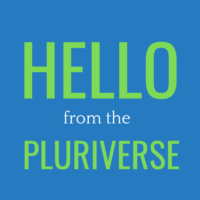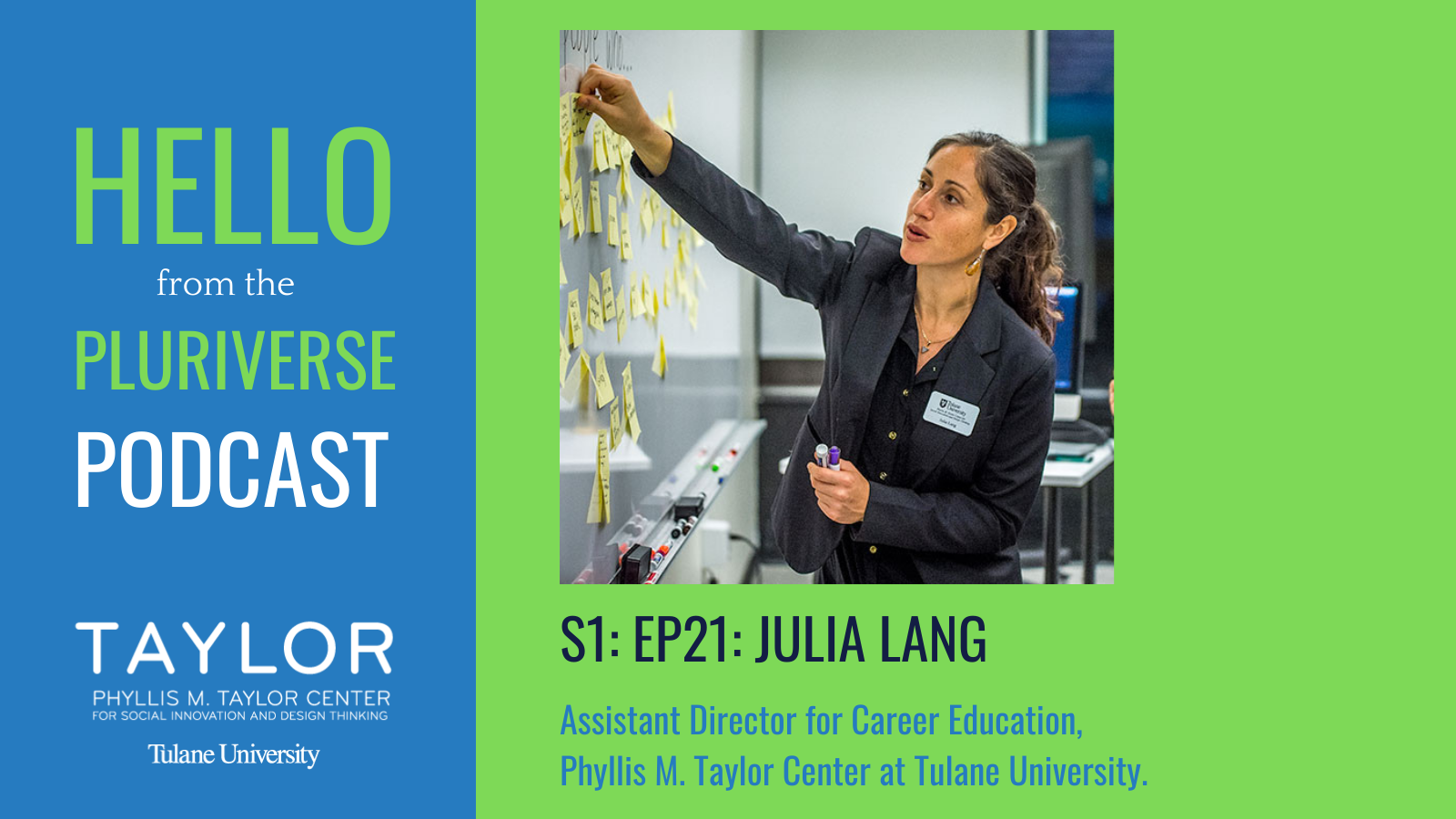Julia Lang is the Assistant Director for Career Education at the Phyllis M. Taylor Center at Tulane University. She leads two major programs here: “Taylor your life” and the Changemaker Institute. Julia is all about teaching students to embrace a design thinking mindset towards your work and your life. A design thinking mindset has not only been used by Julia in her programs, but also in her life; showing just how design thinking can help designers and non-designers to re-examine and restructure your life.
Connect with Julia Lang:
Pluriverse Publication Chapter: Julia Lang
Written by Natalie Hudanick
Download a PDF Layout of the Julia Lang chapter of the Pluriverse Publication.
Even though she has no formal training in design, Julia Lang has embraced design and a design thinking mindset in every aspect of her life. With a background in civic engagement, Julia discovered design thinking when she started working at the Phyllis M. Taylor Center at Tulane University. She learned about design thinking mindsets when she was developing the curriculum for “Taylor your Life”, a career education class that uses design mindsets to guide student’s career paths. “Taylor Your Life” led Julia to reexamine and restructure her life using design thinking which has helped her learn more about herself than she had known before.
As the Assistant Director for Career Education and Life Design at the Taylor Center, she not only founded and leads “Taylor Your Life”, but also a social venture accelerator called the Changemaker Institute. In this role, Julia guides students, who apply and develop ideas of what they want to create and build, to be accountable with their ideas through communication and collaboration with the potential user of their products. This may involve students completely changing their ideas, but she stresses that this is part of the process when you focus on empathy and make human-centered research. Both “Taylor Your Life” and the Changemaker Institute emphasize using design thinking to understand how a student’s identity could either help or hinder their process and their journey to creating something. Julia teaches students that design thinking can help them to accept where they are in the process, emphasizing their experiences, their history, and the influences they have received, to define what they are really interested in.
To Julia, design thinking is a helpful and useful tool for creating something that does not exist yet. Design thinking, and design, is a nimble process that can create something in real time. Using this mindset, Julia believes that the best designs come about when people are thinking wild or big, and that the best designs that are created have their foundation in being new and relevant, tailored to what the user actually needs and wants, constantly making sure that there is always a human-centered component.
As Julia was new to design and design thinking, the advice she has to give to non-designers and new designers is to constantly be open to learning. She is still learning about design from her colleagues; she never pretends to be an expert. Julia also advices that non-designers and new designers need to learn how to “flex the muscle that allows you to hear criticism”. Feedback is incredibly important, and we all need to listen and adapt/change any products or processes based on the given criticism to help make a product as successful as possible. Her last piece of advice is, that at its core of design thinking are relationship and trust building. Building relationships and establishing trust with the community or the user is critical to making sure there is a human-centered component to one’s products.
Julia Lang displays just how impactful design thinking can have on one’s life. Her use of design thinking to restructure her life displays the multitude of ways in which design thinking can be used. Design thinking involves constantly learning from the people and the environment around you, so Julia’s advice to be acknowledge that you may not be an expert in an area, especially if you are new to design, can be influential on your own use of design thinking. The ability to step back, listen, and learn from others and their experiences is ultimately what creates the human-centered component of design.
- Instagram: @hellopluriverse
- Twitter: @hellopluriverse
- Email: taylor@tulane.edu
- Subscribe to our newsletter
The Hello from the Pluriverse Podcast aims to open up and create a space to have conservations about the pluriversality in design.
This podcast is a project of the Design Thinking for Social Innovation Program at the Phyllis M. Taylor Center for Social Innovation and Design Thinking at Tulane University.
Executive Producer: Lesley-Ann Noel, Ph.D
Sound editing
- Max Esperance
- Lavonte Lucas: xn--vonni-fsa.com, Instagram: @vonnieradass, Twitter: @vonnieradass
Hello from the Pluriverse 2020-2021 Student Team
- Max Esperance – Podcast lead
- Natalie Hudanick and Michaeline Anglemire – Editors
- Tiwani Oseni – Communications
Hello from the Pluriverse 2019-2020 Student Team

